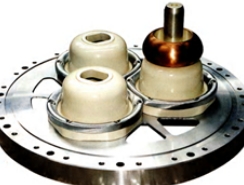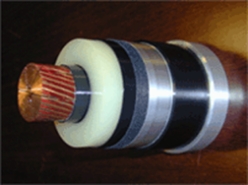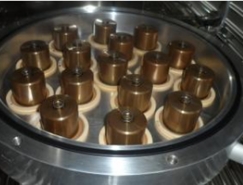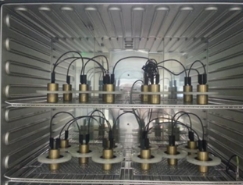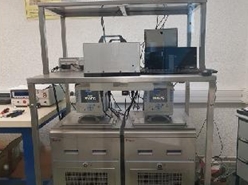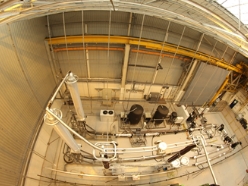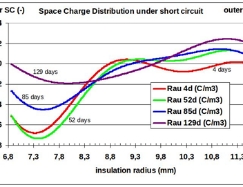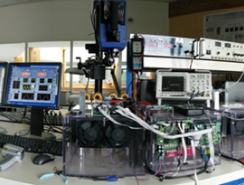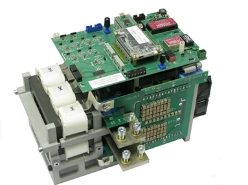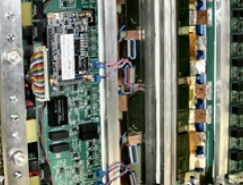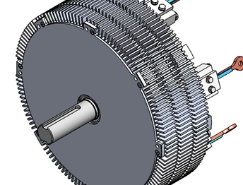Accueil • GEMS
EEMS
Electrical Engineering, Materials and Systems
RESEARCH TOPICS:
The GEMS team’s research is situated in the context of the major economic and social challenges associated with the energy transition. They aim to strengthen the electrical vector, both in the deployment of renewable energies and their high-voltage transport, and in the revolution of industrial miniaturization aimed at contributing to the development of tomorrow’s electrical power systems. They also aim to provide new tools for the understanding of fundamental physical phenomena in order to eliminate scientific barriers.
The work of the team is related to materials, components and systems for electrical energy, with two application areas which are electrical mobility, land, water and air, and large electrical networks. They are declined in two sub-themes

Structures and insulating materials subject to high stress:
The destruction or decrease in performance of insulating layers is very often the cause of failures observed in components and systems. Insulating materials thus play an essential role in the reliability of electrical and electronic applications where the financial stakes or in terms of human safety are decisive, but also in large-scale distributed applications.
The GEMS team is interested in understanding, in the short and long term, the dielectric phenomena that develop in materials under the effect of thermal, electrical and environmental constraints. Their study and analysis allow to increase the reliability through a choice of material and an adapted design of the component, the modeling of its aging and/or the development of new materials. The targeted applications are energy transport, embedded systems (aeronautics, automobile, space), high performance equipment, sensors and any application integrating insulating layers subjected to strong electrical and thermal constraints.
The study and the understanding of the phenomena aiming at the development of materials with high dielectric performances constitute the main objectives.
The solutions developed by the GEMS team by S. Agnel, J. Castellon, J-C. Laurentie and P. Notingher are based on approaches that closely link experimental and modeling approaches, using original methods that can be directly adapted to components and implemented on site. These are in particular the so-called “thermal stimulus” techniques, which the team is developing and for which it enjoys a strong international recognition. The current dynamics is linked to the future high voltage energy networks, necessary to transport high power over long distances (“super-grids”) and whose main limiting factors are the materials for cables and equipment. Research also concerns bio-based and nanostructured materials for electrical engineering applications, as well as insulators used in electronic components.
Thanks to its strong links with specialists in materials engineering, the team covers a wide range of aspects related to the development and aging of insulators. It has important means of dielectric studies, some of them without equivalent at the French and world level.

Embedded energy systems and converter architectures:
These researches are situated in a context of massive introduction of electrical systems in transportation. Most of the studies concern the reliability of power electronics components and systems and the development of static and electromechanical converter architectures.
In the context of power integration, GEM is working on the synthesis of new power converter architectures, whose intrinsic performance can be maximally exploited if these systems are integrated. They are based on the “parallel” association of a large number of identical cells, interconnected by an original magnetic coupling device associated with a particular control law (2 patents are issued from these techniques). If the application to integrated converters is a privileged way to exploit these principles, many applications to more classical technologies are also very promising. Recent works of the team have allowed the realization of demonstrators with performances far above the state of the art, and corresponding to the specifications of embedded aeronautical networks or land vehicles :
- Isolated converter 28V-600V-12kW using SiC MOSFET chips, with 8 phases architecture according to Patent CNRS-INPT-UM WO 2007/006902 A2 (2016, thesis of J. Brunello)
- Three non-isolated 28V-300V-10kW converters with 6-phase magnetic coupler according to Patent CNRS-INPT-UM WO 2007/006902 A2 (2015, Liebherr Aerospace Contract)
- Electric vehicle induction charging system 22kW (2017, thesis of A. Hammoud – IES Synergy Contract)
Equipement spécifique
Pour la fabrication
Pour la caractérisation
Pour la fabrication
Lorem ipsum dolor sit amet, consectetur adipiscing elit. Ut elit tellus, luctus nec ullamcorper mattis, pulvinar dapibus leo.
Pour la caractérisation
Lorem ipsum dolor sit amet, consectetur adipiscing elit. Ut elit tellus, luctus nec ullamcorper mattis, pulvinar dapibus leo.
Compétences
Compétences techniques
Compétences techniques
Conception capteurs spécifiques (les moutons à 6 pattes)
PARTNERS
ACADEMICS
INDUSTRIALS AND INSTITUTIONALS
ACADEMICS
This work is carried out in collaboration with public partners (Universities of Toulouse, Savoie, Poitiers, Paris, Bucharest, Bologna, Chengdu) and through close links with industrialists in the field (Nexans, General Electric, EDF, RTE, Hydro-Quebec, SuperGrid Institute, ArianeGroup), in the framework of bilateral or institutional projects.
The studies are carried out in a network (ANR FIDEA and ETHAER, supported by the team) with the main national players in the field, i.e. the laboratories of the GDR SEEDS community (SATIE, Ampère, LAPLACE, GeePs, PROMES), as well as public and industrial players such as IFFSTAR, Airbus, Liebherr Aerospace, IES Synergie, SuperGrid Institute, ECA Robotics or the SAFRAN group.
INDUSTRIALS AND INSTITUTIONALS
Lorem ipsum dolor sit amet, consectetur adipiscing elit. Ut elit tellus, luctus nec ullamcorper mattis, pulvinar dapibus leo.
Projets de recherche
2024-2027
Mega Sete
Déploiement de la première ferme photovoltaïque offshore pré-commerciale de 1MW en méditerranée française
Partenaires :
SolarinBlue, Technip Energies France, Sorbonne Universite - L Observatoire Oceanologique de Banyuls-Sur-Mer
Financé par :
2022-2027
Halt O’Plast
Développement d'une technique de captation de microplastiques en milieu aqueux basée sur un couplage électrostatique/micro-fluidique
